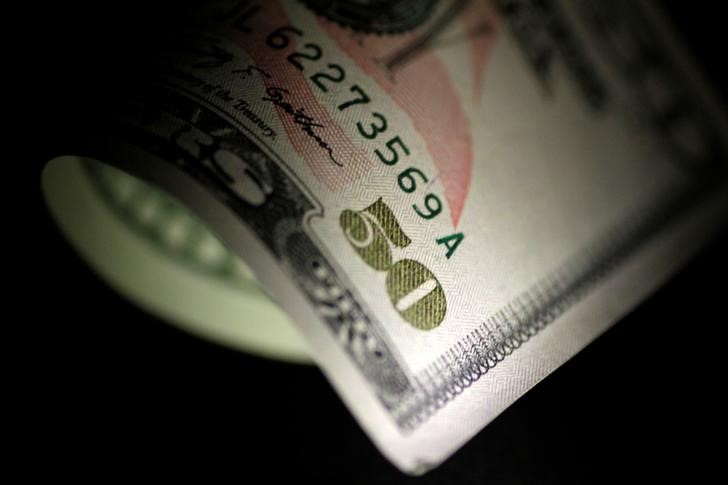By Gina Lee
Investing.com – The dollar was down on Thursday morning in Asia, subdued by weak U.S. economic data but with lingering optimism over the development of a COVID-19 vaccine leading investors to riskier assets tied to global commodities and emerging markets.
The U.S. Dollar Index that tracks the greenback against a basket of other currencies inched down 0.09% to 91.918 by 10:05 PM ET (2:05 AM GMT), its lowest level in more than two months. It was also close to its weakest in more than two months against the euro.
The dollar also took a hit after data released on Wednesday showed that the U.S.’s GDP grew 33.1% quarter-on-quarter during the third quarter, just missing the 33.1% growth in forecasts prepared by Investing.com but unchanged from the second quarter.
The data also showed 778,000 jobless claims for the past week, higher than the forecast 730,000 claims and the 748,000 claims submitted during the previous week. There were grim warnings that even more job losses could be on the way, with many states imposing restrictive measures to curb the spiking number of COVID-19 cases.
The number of global COVID-19 cases has surpassed 60 million as of Nov. 26, of which over 12.7 million are U.S. cases, according to Johns Hopkins University data.
Positive data for three vaccine candidates’ efficacies, and a smoother transition to the Joe Biden administration in the U.S than appeared to be likely, saw a recent turn towards riskier currencies and emerging market assets. Although the dollar’s subsequent fall was rapid enough to open the possibility of a rebound in the short term, some investors warned that a longer-term decline could be possible and are already shifting their positions in anticipation of the COVID-19 outbreak waning in 2021.
“A China-led recovery in the global economy and commodities should benefit commodities currencies … the outlook is good, but we are reaching levels where authorities might feel some concern. Other emerging market currencies with good fundamentals should benefit,” Mizuho Securities chief currency strategist Masafumi Yamamoto told Reuters.
The USD/JPY pair edged down 0.11% to 104.33.
The AUD/USD pair inched up 0.03% to 0.7366, while the NZD/USD pair inched down 0.01% to 0.7003. The AUD traded near its highest since September, boosted by improved risk appetite and strong demand in China for Australian commodities exports. Meanwhile, the NZD was trading near its strongest level in over two years.
The USD/CNY pair edged down 0.11% to 6.5674. Investors will monitor the onshore yuan to see if the yuan moves towards the 29-month high seen during the previous week.
The GBP/USD pair inched up 0.09% to 1.3394. The pound was near its strongest level against the dollar since Sep. 2, while holding steady against the euro. Investors await details on the Brexit trade talks between the U.K. and the European Union this week.
The Asian session saw small moves overall as the U.S. markets close for the Thanksgiving holiday.
